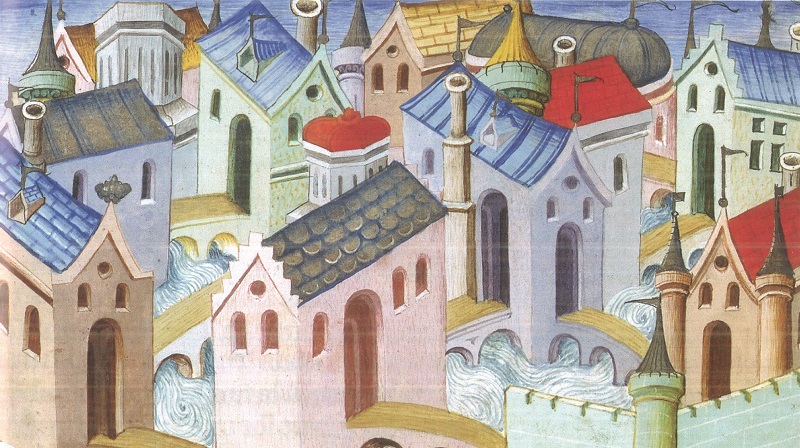Road to Exchanges and Mutual Learning

Thousands of years ago, the Romans in the Mediterranean region were amazed by silk they called “Seres” (Latin for “Chinese”), while the Chinese on the other side of the Eurasian continent were intoxicated by the fragrance of grape wine in jade cups.
Since Zhang Qian, an envoy of the Western Han Dynasty (202 B.C.-8 A.D.), embarked on a journey to the Western Regions, the Silk Road has connected China and other countries in Central Asia, West Asia, and South Asia with the melodious sound of camel bells.
Based on the latest archaeological findings and authoritative research outcomes, the book From Zhang Qian to Marco Polo: Eighteen Lectures on the Silk Road covers 18 special topics on the ancient Silk Road including the routes, towns, wars, material exchange, population flow, political power, settlements, archaeological excavations, and cultural relics. It shines light on the cultural value and historical role of the Silk Road in terms of cultural exchange and mutual learning between Chinese and foreign civilizations during the 1,400 years from Zhang Qian’s journey to the Western Regions to Italian traveler Marco Polo’s visit to China in the Yuan Dynasty (1271-1368). The book also explores the rich meaning, contemporary value, and global significance of the Silk Road.
This book is forward-thinking and inspiring. The author, Professor Rong Xinjiang, provides many details that cannot be found in other academic works on the Silk Road. He referred to Khotanese travel notes unearthed in Dunhuang, Sogdian and Uighur documents unearthed in Turpan, and other historical materials found in China.
“The Silk Road shares much with silk. Sometimes it is like flowing silk threads. Some lines are clear, and some are intermittent. And sometimes it is like a large silk net covering a vast land with gorgeous patterns,” Rong said.
He stressed that the ancient Silk Road was divided into many parts for most periods in history. Only by connecting all the parts can we gain an overview of the entire Silk Road. Therefore, to better explore the rich connotations of the Silk Road, we should recognize the contributions of all countries and peoples across each segment of the ancient trade route.
The heart of the book is an in-depth exploration of the contemporary value of the Silk Road. The book focuses on the interactions between China and ancient Iranian civilizations such as Persia and Sogdiana, and the cultural exchange between China and Dashi (the Arab Empire). The regions involved are important participants in today’s Belt and Road Initiative. In-depth examination of the past provides historical references and fuel for exchange and mutual learning between Chinese and foreign civilizations in the contemporary era.
The two lectures “All Roads Lead to Chang’an” and “Diverse Cultures of Chang’an in the Tang Dynasty (618-907)” focus on ancient Chang’an and discuss the impact of foreign civilizations on China, outlining the important trajectory of contact, collision, and exchange between China and the outside world, highlighting the fine tradition of Chinese culture to draw on the strengths of others to promote integration and innovation across different historical periods.
It also showcases the Silk Road spirit of peace and cooperation, openness and inclusiveness, mutual learning, and mutual benefit, which is also the core reason for the steady and long-term development of the Belt and Road Initiative.
The book also examines the spread of Chinese culture to the West and its significance to the world from new perspectives such as papermaking, classics, and letters. Papermaking is one of the four great inventions of ancient China. Because of its portability, paper became the main writing material and an essential item for business travelers on the Silk Road. It played an important role in the smooth and orderly operation of the Silk Road.
The introduction of Buddhism to China was a major event in the history of human civilizations. Especially, after the decline of Buddhism in India, the significance of this cultural dissemination became even more prominent. Translation of Buddhist scriptures started in an era of oral interpretation. Thanks to the historical opportunity presented by the great development of paper writing in China, translation of Buddhist scriptures soon shifted from oral to written.
After paper was used to copy Buddhist scriptures, it played a fundamental role in promoting the spread of Buddhism from India to the Western Regions and then to the Central Plains of China, which can be seen in the fourth lecture “The Contribution of Paper to the Spread of Buddhist Scriptures along the Silk Road.”
The spread of cultures along the Silk Road strengthened understanding and sympathy between different civilizations and laid a historical foundation for the integrated development of the world.